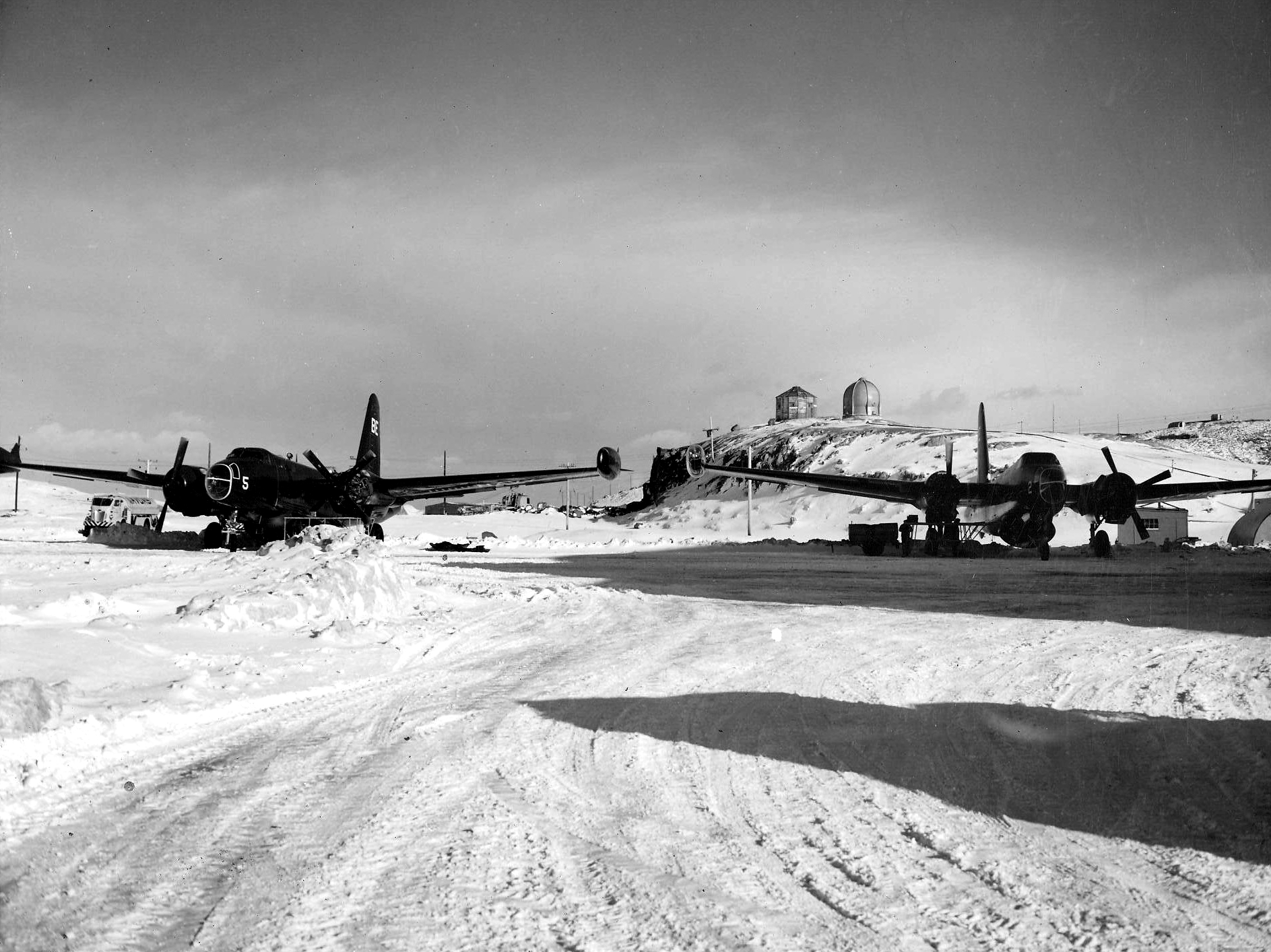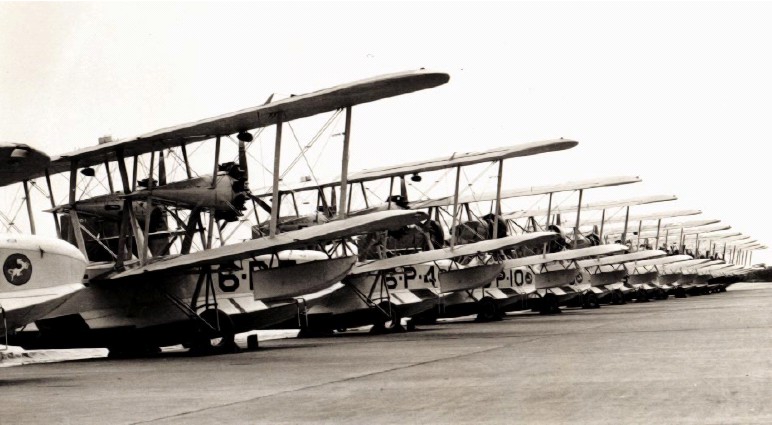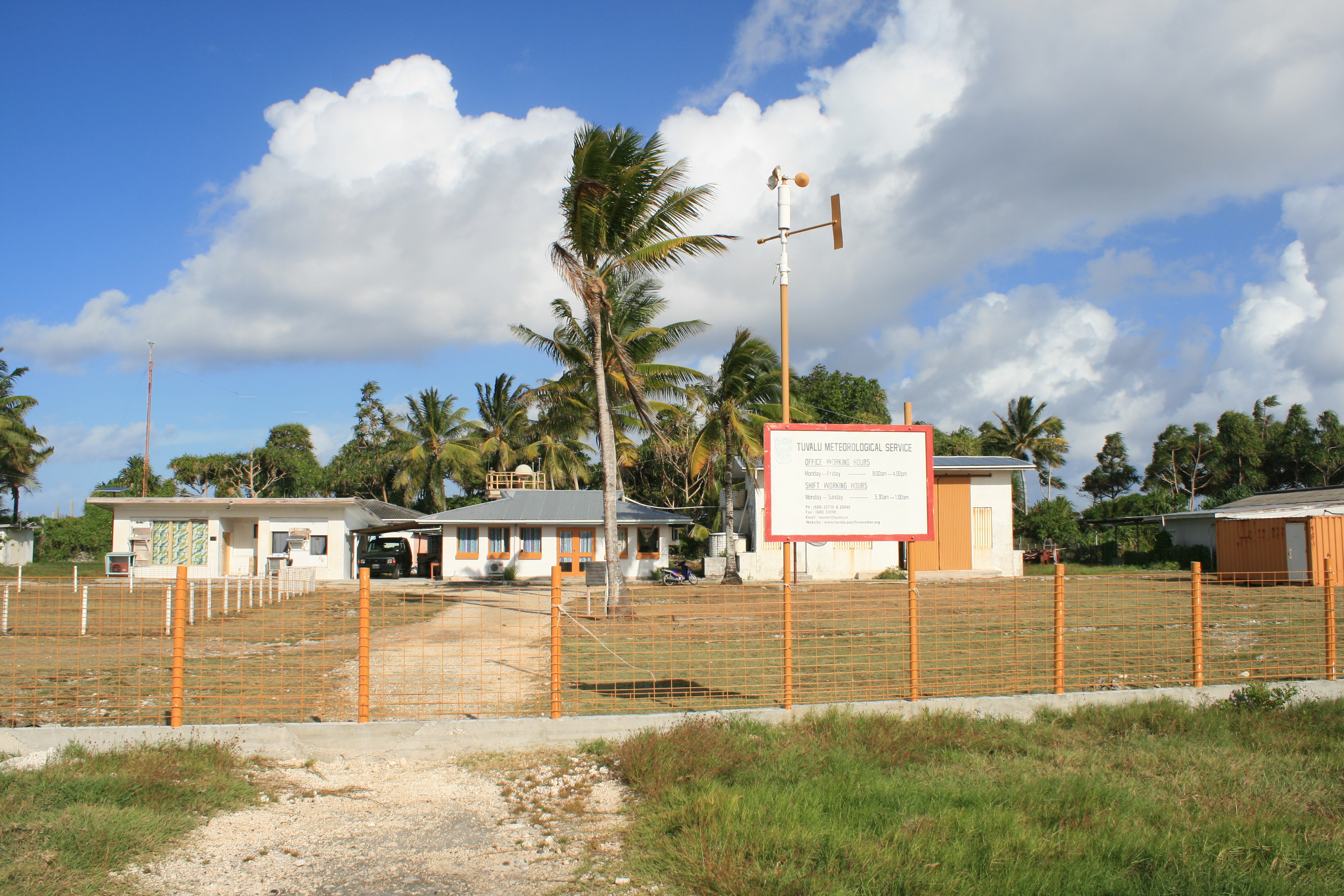|
VP-6
VP-6 was a long-lived Patrol Squadron of the U.S. Navy, nicknamed the ''Blue Sharks''. Originally established as Bombing Squadron VB-146 on 15 July 1943, it was redesignated Patrol Bombing Squadron VPB-146 on 1 October 1944, redesignated VP-146 on 15 May 1946, redesignated Medium Patrol Squadron (Landplane) VP-ML-6 on 15 November 1946, redesignated VP-6 on 1 September 1948 and disestablished on 31 May 1993. It was the third squadron to be designated VP-6, the first VP-6 was disestablished on 3 May 1926 and the second VP-6 was disestablished on 20 June 1945. Operational history *15 July 1943: VB-146 was established at NAS Whidbey Island, Washington to fly the PV-1 Ventura. On 5 December 1943, the squadron moved to NAS Alameda, California, for final training prior to combat deployment. On 22 December all squadron aircraft, equipment and personnel were embarked aboard for conveyance to NAS Kaneohe Bay, Hawaii. *29 August 1943: Lieutenant Commander Ralph R. Beacham and his crew of ... [...More Info...] [...Related Items...] OR: [Wikipedia] [Google] [Baidu] |
VP-6 (1924-6)
VP-6 was a long-lived Patrol Squadron of the U.S. Navy, nicknamed the ''Blue Sharks''. Originally established as Bombing Squadron VB-146 on 15 July 1943, it was redesignated Patrol Bombing Squadron VPB-146 on 1 October 1944, redesignated VP-146 on 15 May 1946, redesignated Medium Patrol Squadron (Landplane) VP-ML-6 on 15 November 1946, redesignated VP-6 on 1 September 1948 and disestablished on 31 May 1993. It was the third squadron to be designated VP-6, the first VP-6 was disestablished on 3 May 1926 and the second VP-6 was disestablished on 20 June 1945. Operational history *15 July 1943: VB-146 was established at NAS Whidbey Island, Washington to fly the PV-1 Ventura. On 5 December 1943, the squadron moved to NAS Alameda, California, for final training prior to combat deployment. On 22 December all squadron aircraft, equipment and personnel were embarked aboard for conveyance to NAS Kaneohe Bay, Hawaii. *29 August 1943: Lieutenant Commander Ralph R. Beacham and his crew of ... [...More Info...] [...Related Items...] OR: [Wikipedia] [Google] [Baidu] |
VPB-11
VPB-11 was a Patrol Bombing Squadron of the U.S. Navy. The squadron was established as Torpedo & Bombing Squadron 19-D14 (VT-19D14) on 7 February 1924, redesignated Torpedo & Bombing Squadron 6D14 (VT-6D14) on 1 July 1927, redesignated Patrol Squadron 6-B (VP-6B) on 1 April 1931, redesignated Patrol Squadron 6-F (VP-6F) on 17 July 1933, redesignated Patrol Squadron 6 (VP-6) on 1 October 1937, redesignated Patrol Squadron 23 (VP-23) on 1 July 1939, redesignated Patrol Squadron 11 (VP-11) on 1 August 1941, redesignated Patrol Bombing Squadron 11 (VPB-11) on 1 October 1944 and disestablished on 20 June 1945. Operational history *7 February 1924: VT-19 was established as a torpedo squadron based at NAS Ford Island, Pearl Harbor, Hawaii, flying 13 DT-2 aircraft. *25 April 1925: Several of the squadron’s pilots made the first successful night landings on an aircraft carrier under way. The landings, made under varying lighting and weather conditions, were part of a program to determ ... [...More Info...] [...Related Items...] OR: [Wikipedia] [Google] [Baidu] |
Patrol Wing
A Patrol Wing (PatWing) was a United States Navy aviation unit with the commander of a Patrol Wing known as the Commodore, the ComPatWing or COMPATWING. From 1 November 1942 to 30 June 1973 Patrol Wings were designated "Fleet Air Wings". On 26 March 1999 all then existing Pacific Fleet Patrol Wings were redesignated Patrol and Reconnaissance Wings and on 1 June 1999 all then existing Atlantic Fleet Patrol Wings were redesigned Patrol and Reconnaissance Wings with the Commodore designated as COMPATRECONWING or ComPatReconWing. Currently, there are three Patrol and Reconnaissance Wings in the U.S. Navy Currently Active Patrol and Reconnaissance Wings Patrol and Reconnaissance Wing ONE ''Lineage: Patrol Wing 1(1st), Fleet Air Wing 1, Patrol Wing 1(2nd), Patrol and Reconnaissance Wing 1''. The wing was established as Patrol Wing 1 In San Diego on 1 Oct 1937. It relocated to NAS Kaneohe, Hawaii on 16 October 1941. On 19 September 1942 it relocated to Noumea where on 1 November ... [...More Info...] [...Related Items...] OR: [Wikipedia] [Google] [Baidu] |
Lockheed P-3 Orion
The Lockheed P-3 Orion is a four-engined, turboprop anti-submarine and maritime surveillance aircraft developed for the United States Navy and introduced in the 1960s. Lockheed based it on the L-188 Electra commercial airliner. The aircraft is easily distinguished from the Electra by its distinctive tail stinger or "MAD" boom, used for the (MAD) of submarines. Over the years, the aircraft has seen numerous design developments, most notably in its electronics packages. Nume ... [...More Info...] [...Related Items...] OR: [Wikipedia] [Google] [Baidu] |
NAS Whidbey Island
Naval Air Station Whidbey Island (NASWI) is a naval air station of the United States Navy located on two pieces of land near Oak Harbor, on Whidbey Island, in Island County, Washington. The main portion of the base, Ault Field, is about three miles north of Oak Harbor. The other section, called the Seaplane Base for the PBY Catalina flying boats once based there, holds most of the island's Navy housing as well as the air station's main Navy Exchange and DeCA Commissary. The NASWI commanding officer also has command of a satellite airfield, Naval Outlying Landing Field (NOLF) Coupeville, on central Whidbey Island at , roughly nine miles south of Ault Field. Primarily used for Field Carrier Landing Practice (FCLP) by carrier-based jets, this field has no permanently assigned personnel. NASWI supports the MH-60S Seahawk helicopter and the EA-18G Growler, P-8 Poseidon, EP-3E ARIES, and C-40 Clipper fixed-wing aircraft. History 1940s On 17 January 1941, almost 11 months ... [...More Info...] [...Related Items...] OR: [Wikipedia] [Google] [Baidu] |
Lockheed P-2 Neptune
The Lockheed P-2 Neptune (designated P2V by the United States Navy prior to September 1962) is a maritime patrol and anti-submarine warfare (ASW) aircraft. It was developed for the US Navy by Lockheed to replace the Lockheed PV-1 Ventura and PV-2 Harpoon, and was replaced in turn by the Lockheed P-3 Orion. Designed as a land-based aircraft, the Neptune never made a carrier landing, but a small number were converted and deployed as carrier-launched, stop-gap nuclear bombers that would have to land on shore or ditch. The type was successful in export, and saw service with several armed forces. Design and development Development of a new land-based patrol bomber began early in World War II, with design work starting at Lockheed's Vega subsidiary as a private venture on 6 December 1941.Scutts ''Air International'' January 1995, pp. 42–43. At first, the new design was considered a low priority compared to other aircraft in development at the time, with Vega also developing and ... [...More Info...] [...Related Items...] OR: [Wikipedia] [Google] [Baidu] |
Lockheed Ventura
The Lockheed Ventura is a twin-engine medium bomber and patrol bomber of World War II. The Ventura first entered combat in Europe as a bomber with the RAF in late 1942. Designated PV-1 by the United States Navy (US Navy), it entered combat in 1943 in the Pacific. The bomber was also used by the United States Army Air Forces (USAAF), which designated it the Lockheed B-34 (''Lexington'') and B-37 as a trainer. British Commonwealth forces also used it in several guises, including antishipping and antisubmarine search and attack. The Ventura was developed from the Lockheed Model 18 Lodestar transport, as a replacement for the Lockheed Hudson bombers then in service with the Royal Air Force. Used in daylight attacks against occupied Europe, they proved to have weaknesses and were removed from bomber duty and some used for patrols by Coastal Command. After USAAF monopolization of land-based bombers was removed, the US Navy ordered a revised design which entered service as the PV-2 H ... [...More Info...] [...Related Items...] OR: [Wikipedia] [Google] [Baidu] |
Naval Air Forces
Commander, Naval Air Forces ( COMNAVAIRFOR, and CNAF; and dual-hatted as Commander, Naval Air Force, Pacific, and COMNAVAIRPAC) is the aviation Type Commander (TYCOM) for all United States Navy naval aviation units. Type Commanders are in Administrative Control (ADCON), and in some cases Operational Control (OPCON) of certain types of assets (ships, submarines, aircraft, and Fleet Marines) assigned to the Pacific and Atlantic Fleets. AIRFOR is responsible for the materiel readiness, administration, training, and inspection of units/squadrons under their command, and for providing operationally ready air squadrons and aircraft carriers to the fleet. COMNAVAIRFOR is a three-star headquarters, based at NAS North Island in Coronado, California. The current commander is VADM Kenneth R. Whitesell. The staff is made up of approximately 515 officer, enlisted, civilian and contractor personnel. The position is colloquially known throughout the Navy as "the Air Boss", mimicking the ni ... [...More Info...] [...Related Items...] OR: [Wikipedia] [Google] [Baidu] |
Funafuti
Funafuti is the capital of the island nation of Tuvalu. It has a population of 6,320 people (2017 census), and so it has more people than the rest of Tuvalu combined, with approximately 60% of the population. It consists of a narrow sweep of land between wide, encircling a large lagoon (''Te Namo'') long and wide. The average depth of the Funafuti lagoon is about 20 fathoms (36.5 metres or 120 feet). With a surface area of , it is by far the largest lagoon in Tuvalu. The land area of the 33 islets around the atoll of Funafuti totals ; taken together, they constitute less than one percent of the total area of the atoll. Cargo ships can enter Funafuti's lagoon and dock at the port facilities on Fongafale. The capital of Tuvalu is sometimes said to be Fongafale or Vaiaku, but, officially, the entire atoll of Funafuti is its capital, since it has a single government that is responsible for the whole atoll. Fongafale The largest island is Fongafale. The island houses four villag ... [...More Info...] [...Related Items...] OR: [Wikipedia] [Google] [Baidu] |
Kanton Island
Canton Island (also known as Kanton or Abariringa), previously known as Mary Island, Mary Balcout's Island or Swallow Island, is the largest, northernmost, and , the sole inhabited island of the Phoenix Islands, in the Republic of Kiribati. It is an atoll located in the South Pacific Ocean roughly halfway between Hawaii and Fiji. The island is a narrow ribbon of land around a lagoon; an area of . Canton's closest neighbour is the uninhabited Enderbury Island, west-southwest. The capital of Kiribati, South Tarawa, lies to the west. , the population was 20, down from 61 in 2000. The island's sole village is called Tebaronga. Kiribati declared the Phoenix Islands Protected Area in 2006, with the park being expanded in 2008. The marine reserve contains eight coral atolls, including Canton. Because it is inhabited, management of Canton Island is described in the Canton Resource Use Sustainability Plan (KRUSP), which covers a radius around the atoll. Over 50% of the island and lago ... [...More Info...] [...Related Items...] OR: [Wikipedia] [Google] [Baidu] |
Everett, Washington
Everett is the county seat and largest city of Snohomish County, Washington, United States. It is north of Seattle and is one of the main cities in the metropolitan area and the Puget Sound region. Everett is the seventh-largest city in the state by population, with 110,629 residents as of the 2020 census. The city is primarily situated on a peninsula at the mouth of the Snohomish River along Port Gardner Bay, an inlet of Possession Sound (itself part of Puget Sound), and extends to the south and west. The Port Gardner Peninsula was historically inhabited by the Snohomish people, who had a winter village named Hibulb near the mouth of the river. Modern settlement in the area began with loggers and homesteaders arriving in the 1860s, but plans to build a city were not conceived until 1890. A consortium of East Coast investors seeking to build a major industrial city acquired land in the area and filed a plat for "Everett", which they named in honor of Everett Colby, the son o ... [...More Info...] [...Related Items...] OR: [Wikipedia] [Google] [Baidu] |
Espiritu Santo
Espiritu Santo (, ; ) is the largest island in the nation of Vanuatu, with an area of and a population of around 40,000 according to the 2009 census. Geography The island belongs to the archipelago of the New Hebrides in the Pacific region of Melanesia. It is in the Sanma Province of Vanuatu. The town of Luganville, on Espiritu Santo's southeast coast, is Vanuatu's second-largest settlement and the provincial capital. Roads run north and west from Luganville, but most of the island is far from the limited road network. Around Espiritu Santo lie a number of small islands and islets; among them are: Dany Island, Araki, Elephant Island, Sakao, Lataroa, Lataro, Thion, Malohu, Malwepe, Malvapevu, Malparavu, Maltinerava, Oyster Island, Tangoa, and Bokissa. Vanuatu's highest peak is the 1879 metre (6165 foot) Mount Tabwemasana in west-central Espiritu Santo. History A Spanish expedition of three ships, led by Portuguese explorer Pedro Fernandes de Queirós, lande ... [...More Info...] [...Related Items...] OR: [Wikipedia] [Google] [Baidu] |









.jpeg)
